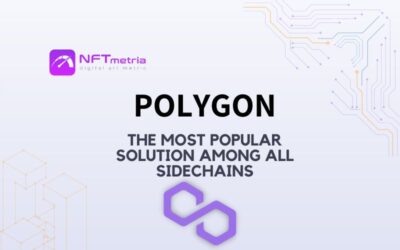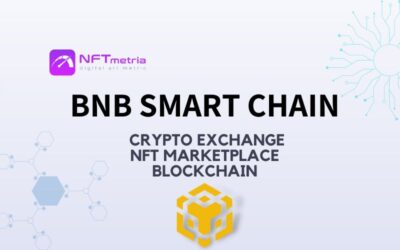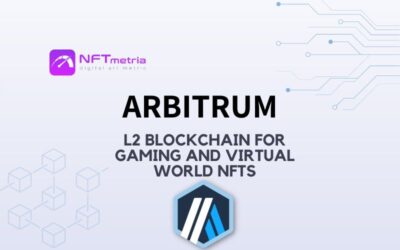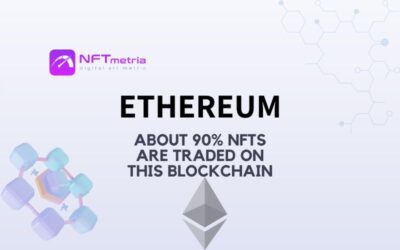The costs of conducting transactions on the Ethereum network can be significant and account for a significant proportion of the costs of interacting with the NFT. There are several approaches to the scalability of the Ethereum network. One of the safe and proven methods is the creation of second-layer networks. The most successful project, which has achieved significant popularity, is the Polygon project.
On this blockchain, transactions are much cheaper than on the Ethereum network. Therefore, many NFT projects choose this blockchain. Convenient interactive tools and a developed blockchain infrastructure have allowed many NFT projects to significantly expand their user base and provide new effective interaction and community building mechanics.
What is Polygon Blockchain?
The Polygon blockchain is a layer 2 scaling solution built for Ethereum to help solve the problem of congestion and high gas fees on the Ethereum network. It is an easy-to-use platform that enables faster and cheaper transactions on the Ethereum network.
It is a sidechain, which means it runs in parallel with the Ethereum blockchain, but with its own set of rules and functions, making it more efficient and scalable. Polygon’s main goal is to become a platform for decentralized applications (DApps) and developers who are looking for cheaper and faster transaction processing.
The blockchain was created by a development team led by Jaynti Kanan. Initially introduced in 2017 as Matic Network, the platform was rebranded as Polygon in 2021 to better reflect the changing mission of the project.
Native Polygon token
Since Polygon is a second-level blockchain, ETH acts as a payment for gas. But nevertheless, there is a utility token – $MATIC, which is used for payments on the network and as a settlement currency between users who work in this ecosystem.
To date, the market capitalization of the $MATIC token has exceeded $8 billion, and the exchange rate is 1 MATIC = $0.865.
How does the Polygon blockchain work?
Transaction processing on the blockchain is fast and secure thanks to the Proof of Stake consensus mechanism.
- Transactions are confirmed by validators who own a certain number of $MATIC tokens and are rewarded for their services.
- Transactions are grouped into blocks, which are then added to the existing blockchain.
- Blocks contain information about transactions, including the sender’s address, the recipient’s address, the transfer amount, and the gas fee paid.
- The gas fee is calculated depending on the complexity of the transaction and the network load at the time of the transaction.
But this is how Polygon works only superficially. It is based on Polygon EDGE, which is technically a modular system.
This framework supports:
- Autonomous blockchains or, as they are also called, sidechains, which have their own pool of validators;
- Blockchain networks that support Security as a service and do not have their own pool of validators – these include Plasma chains, Optimistic Rollups, zkRollups. These blockchain networks work together and collaboratively at Polygon.
What’s more, ensure Polygon’s lightning-fast performance by allowing developers to choose from four levels of Polygon’s architecture:
- Ethereum layer,
- Security layer,
- Polygon network layer,
- Execution layer
The first two layers, Ethereum and Security, are optional but provide benefits such as staking and additional security through the services of validators.
The last two levels, Polygon Network and Execution, are required to create a blockchain or project on Polygon. The Polygon Network layer is an ecosystem of individual blockchain networks, each with its own unique community and local consensus. The Execution layer is responsible for executing smart contracts and transactions on the Polygon blockchain and runs on the Ethereum virtual machine.
Given these levels, developers can tailor their projects to user needs and provide optimal execution with enhanced security, fast transactions, and low fees.
NFT smart contract standards for the Polygon blockchain
NFT smart contract standards for this blockchain are:
- ERC-721. This standard is widely used to create collectibles, games and other unique digital assets on Polygon.
- ERC-1155 is a standard for smart contracts on Ethereum, Polygon and other EVM-compatible blockchains that allows you to store multiple types of tokens in one contract. It provides the ability to create fungible tokens (identical tokens with the same value) and non-fungible tokens (unique tokens with different values) with a single contract, making it more efficient for developers.
Overall, the combination of ERC-1155 and ERC-721 standards allows developers to easily create and manage a wide range of NFTs on the network.
What consensus mechanism does the Polygon blockchain use?
Polygon uses the Proof of Stake (PoS) consensus mechanism.
PoS is a consensus mechanism that allows users to confirm transactions and create new blocks based on the number of cryptocurrencies they own. In this mechanism, users who own more cryptocurrencies are more likely to create new blocks and confirm transactions. This rewards users who invest in the network and incentivizes them to maintain system integrity.
What are the main applications of the Polygon blockchain?
The scopes of Polygon are as follows:
- Games;
- DeFi;
- Collectibles;
- Gambling;
- NFTs;
- Social;
- Web 3.0.
The list doesn’t end there. Above are the most popular applications of Polygon.
Polygon blockchain ecosystem
The ecosystem consists of more than 1500 dApps of different categories:
- Games,
- DeFi,
- Social,
- Casino,
- Marketplaces and others.
Popular dApps on the Polygon blockchain
The most popular dApps on Polygon are:
- Uniswap,
- QuickSwap,
- ParaSwap,
- Stargate Finance,
- Gamma Strategies.
What is Polygon NFT?
Polygon NFTs are NFTs created on the Polygon blockchain. It is most commonly used for Gaming NFTs, Virtual world and Utility NFTs due to lower gas and speed fees.
Top Polygon NFT Collections
The most popular collections on the Polygon network are:
- The Sandbox (Virtual worlds NFT type),
- Trump Digital Trading Cards (Trading cards NFT type),
- ZED RUN (Gaming NFT type),
- CyberKongz VX (PFP NFT type).
The Sandbox
The Sandbox is a metaverse originally released on the Ethereum network in 2019. For the convenience of users and ensuring low commissions, the project switched to the Polygon network in 2022. The Sandbox trade volume on the secondary market is over 160k ETH.
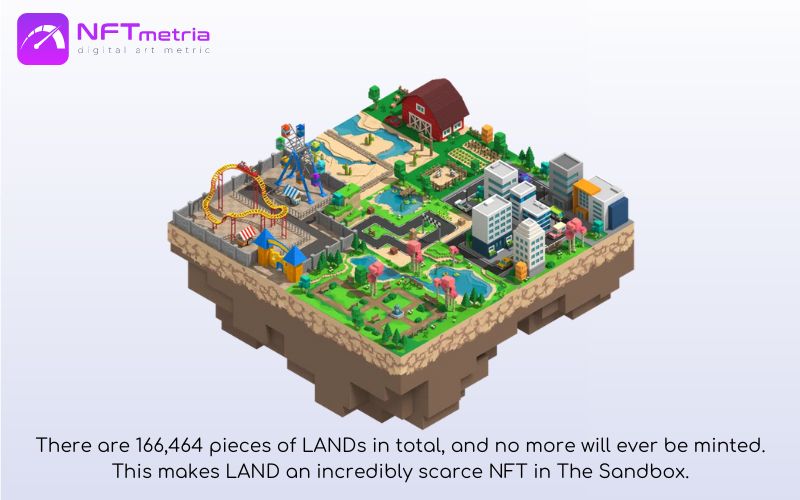
Trump Digital Trading Cards
Trump Digital Trading Cards is an NFT collection of 45,000 trading cards featuring the former US President in various roles: in a boxing ring, as a racing driver , astronaut, superhero and others. His presidential number 45 is engraved on each card. Objectively, this collection has become the most hype in the United States, having collected a lot of criticism and discussion.
Donald Trump announced his new NFT collection with a commercial.
Here it is: pic.twitter.com/yBLpn1Zb0f
— unusual_whales (@unusual_whales) December 15, 2022
To date, the secondary trading volume has exceeded 14k ETH (about $25 million at the moment), and the floor price is 0.14 ETH (about $250) at a mint price of $99 at the start of sales. Later in April 2023, Donald Trump also successfully released Digital Trading Cards Series 2.
Zed Run
Zed Run is a metaverse centered around horse racing. The collection features racehorses of various characteristics; in total there are currently more than 376k pieces. The project is located entirely on the Polygon network. To date, the project has a secondary trading volume on OpenSea of more than 42k ETH (about $75 million).
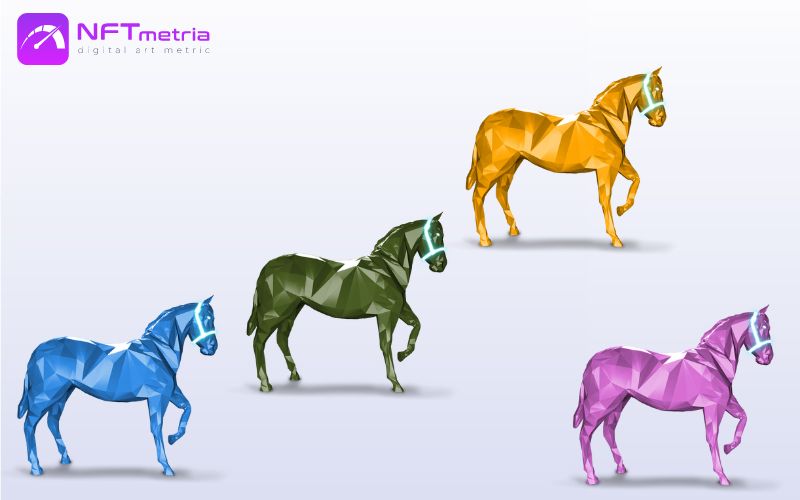
CyberKongz VX
CyberKongz VX is an additional project from the core CyberKongz NFT collection. The collection is avatars released specifically for the metaverse on the Polygon blockchain. To date, the secondary trading volume of the collection is more than 35k ETH (about $62 million), and the floor price is 0.3 ETH (about $530).
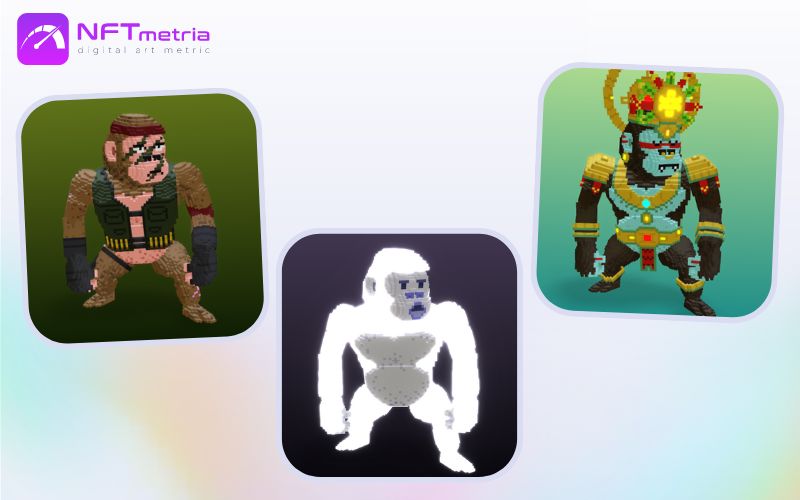
Which wallets are suitable for holding Polygon NFTs?
Almost all wallets that support EVM networks are suitable for storing Polygon NFTs. The most popular wallets are:
- Metamask,
- Trust Wallet,
- Zerion Wallet,
- Ledger.
How to buy Polygon NFTs?
You can buy Polygon NFTs on NFT marketplaces, as well as on centralized exchanges with their subsequent withdrawal to the wallet. For this you need:
- Register and pass identity verification.
- Install a wallet that supports Polygon NFTs, such as Metamask. It has the ability to buy ETH or MATIC directly from the wallet using a bank card (it is worth considering that not all regions are supported by providers, as well as different commissions depending on the region).
- Using P2P trading, buy ETH or MATIC and purchase NFTs in a special section of the centralized exchange.
Where to buy Polygon NFTs?
You can buy Polygon NFTs on marketplaces. The most popular among them:

